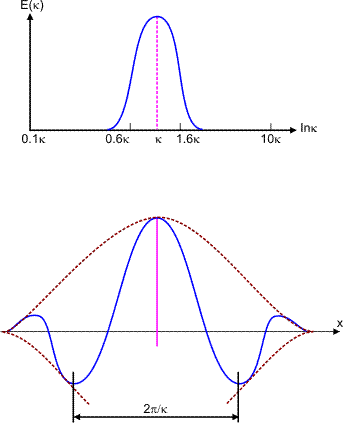Conceptually a given eddy size in a turbulent flow field exists between eddies of larger size and smaller size. The smaller eddies are exposed to the strain rate field of larger eddies. The straining increases the vorticity of smaller eddies with a corresponding increase in their energies at the expense of energy of larger eddies. In other words, there exists a flux of energy from larger to smaller eddies.
The above description implicitly assumes a hierarchy of eddies. Thus the question is: does an eddy of size l receive in equal amount energy from all eddies of sizes li larger than l ? By the same token, does the eddy of size l absorb all the energy it receives or does it pass some down the line to eddies of smaller size l j (< l )?
For this purpose, we need a more robust picture of an eddy. In Lecture-22 we indicated that an autocorrelation and the corresponding spectrum are a Fourier-transform pair. This suggests that if the correlation is a function of spatial separation, the spectrum is a function of wave number. Thus a certain eddy of size l can be associated with a certain wave number,  . An “eddy” of wave number . An “eddy” of wave number  may be thought of as some disturbance containing energy in the neighbourhood of κ. However this disturbance needs to be a fairly broad spike, wide enough to avoid oscillatory behaviour in the correlation. may be thought of as some disturbance containing energy in the neighbourhood of κ. However this disturbance needs to be a fairly broad spike, wide enough to avoid oscillatory behaviour in the correlation.

Figure 24.1: An eddy of wave number  and wavelength 2π/ and wavelength 2π/  . .
|